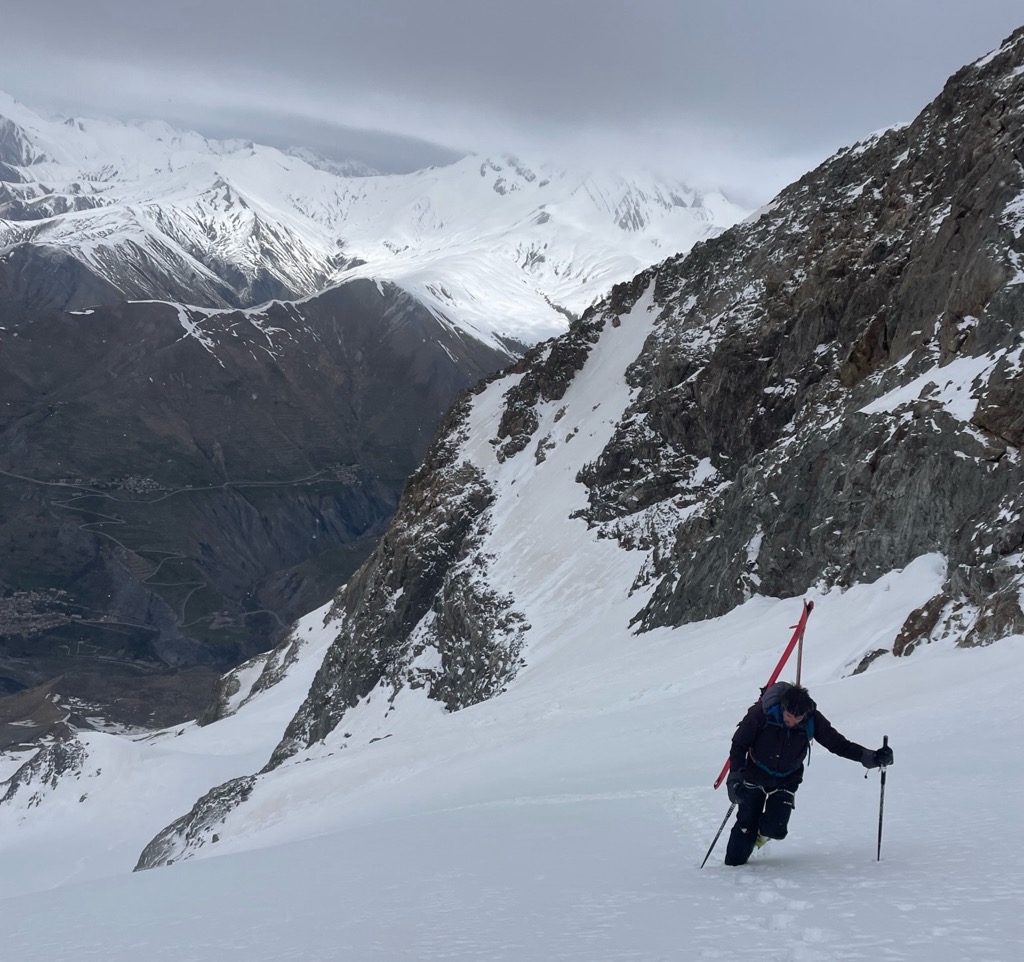Living Your Best Ski Life Means Knowing How to Make the Most of Off-Season
Like so many others, I harbor a love for skiing unmatched by any other experience. It’s the feeling of flying down a mountainside immersed in a mixture of 95% air and 5% frozen water and having only boards beneath your feet to soar through terrain rendered unnavigable without snow. Even standing at my window watching the snowflakes meander downwards gives me joy, like nature’s way of covering up the scars of humanity.
The great ski pioneer Doug Coombs once said, “There are two seasons: winter and waiting for winter.” Social media popularizes the idea of flying to the ends of the Earth for the mythical never-summer; heck, PeakVisor published a few articles last summer about summer skiing in Europe and the Southern Hemisphere.
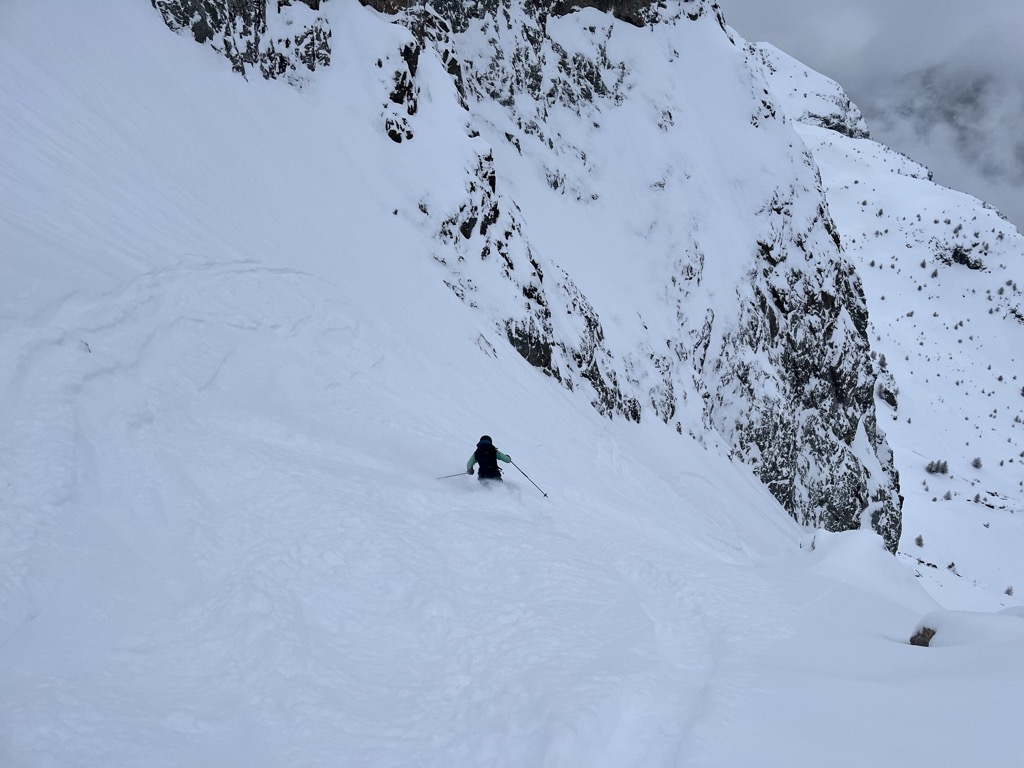
I once walked into a ski shop in Revelstoke, B.C., just before opening day, where the sales specialist—in all seriousness—exclaimed that his life “finally had meaning again.” That stuck with me. Because I know how much he loves skiing, it was endearing. I, too, used to lament summer’s fierce opposition to the joys of winter. The heat, humidity, blazing sun…it always seemed like winter was lightyears away.
But that was then. Now, I’ve moved on and fully embraced summer. Between finding exciting sports to replace the feeling of skiing and training the body for the upcoming season, there’s no room to daydream about skiing.
This paradigm shift in how I use my summers has completely changed my skiing experience. For example, I would be incredibly sore after the first big day of the ski season. Now, my body hardly notices the transition. I feel more confident against injury right away. My skills don’t feel like they’ve eroded, even though I usually haven’t skied in a good seven or eight months. It’s like picking up each season right where the last one left off.

Recreational Sports vs. Training
Recreationists ski for fun and improve their skiing by simply skiing more and with greater purpose. Meanwhile, professionals train to strengthen specific body parts to perform better.
A quick “getting fit for skiing” Google search confirms my suspicions: most websites lead you to technical workouts filled with things like lunges, box jumps, and squats.
For those of us who aren’t professional athletes, finding a sport you love as much as skiing will go a long way toward improving your skiing. Most folks are working full-time jobs, taking care of kids, commuting, cleaning, paying bills, and whatever else. Training often feels like work rather than play. Most people will have a hard time finding the motivation to add more work to their lives.
Having lived in Telluride, CO, and now the French Alps, I’ve met many great skiers over the years—skiers who were truly inspirational. Now, I can’t think of a single skier who spent much time lunging from one foot to the other or doing “leg blasters,” whatever those may be.
The one thing all these guys and gals shared in common was that they lived active lifestyles and were just as passionate about their summer activities as their winter ones. There hasn’t been one sitting around all summer waiting for winter. Even the aforementioned Doug Coombs, surely the greatest ski enthusiast of all time, didn’t take his “winter” and “waiting for winter” philosophy literally. After all, he was a fully certified IFMGA Mountain Guide, meaning he was a master climber as well as a skier.
With all that said, there is a purpose for training. When a skier has reached a plateau in their development, training can often overcome that block. Training can prevent injuries. Even more important, it can bring skiers back to form after a significant injury. Training can help alleviate and manage pain. Whether ski racing or freeriding, an athlete will only reach the elite level with immense training.
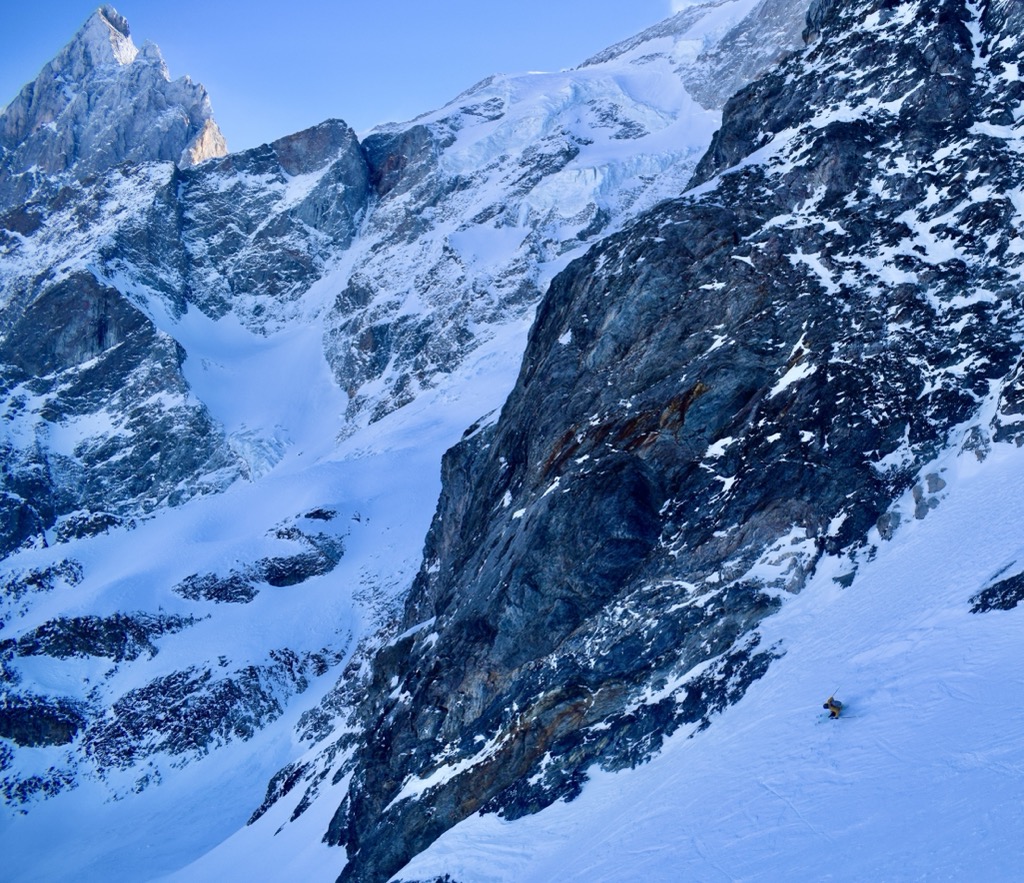
The Best Sports for Ski Fitness
Mountain Biking ⭐⭐⭐⭐⭐
No sport parallels skiing to the extent that mountain biking does. While many people may not see the connection, I believe it’s the greatest sport to hone your skiing for several reasons.
- Mountain biking, like skiing, is all about the flow state. It’s hard to pinpoint what exactly a flow state is scientifically, but the phenomenon is well-known. You can experience a flow state with anything, from cooking to playing music to race-car driving. It’s when you achieve 100% concentration and perform a complex task without any awareness of putting effort into it. Even though you’re flying down a mountain, there’s a zen aspect to it; it’s like the cousin of meditation.
- MTB is a high-speed gravity sport. It builds your reflexes and execution in ways that are translatable to skiing.
- Obviously, if you pedal XC or enduro (big uphills followed by downhills), you'll be building leg strength and aerobic endurance. But the descent is physically challenging as well. The stance is similar to skiing: an athletic posture with the legs shoulder width apart, knees bent, core tight, arms out front, and head up.
- Cornering, the fancy MTB term for turning, is similar to skiing. As much as it’s about turning your wheel, like in a car, cornering involves a weight adjustment and tilting the bike onto the side knobs of the tires. It’s like getting that ski on edge.
- Nearly every ski resort these days has a bike park in the summer, so you can ride the same lifts and trails as you do in the winter.
- It’s low-impact (unless you fall). Although you may be a bit sore, you won’t feel achy after a big ride. Save the cartilage in your knees for skiing.
- MTB is accessible anywhere there are woods or trails—that is, way more places than skiing.
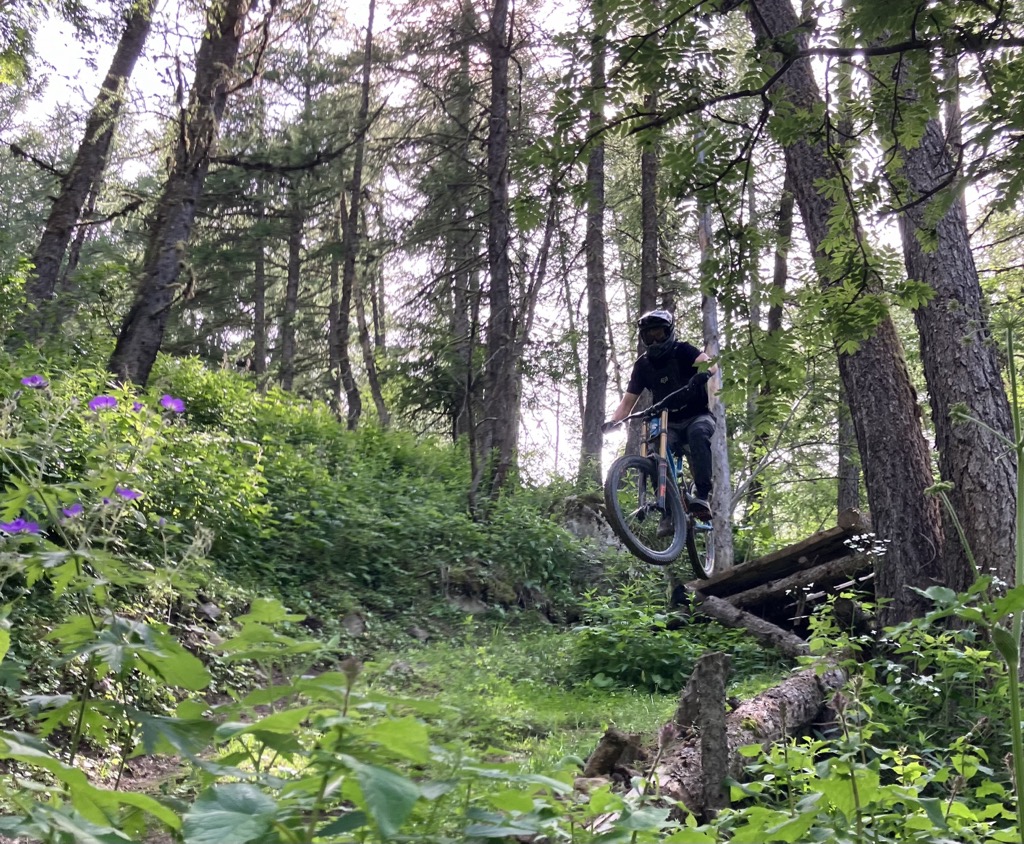
The most important thing of all? Mountain biking is fun. Really fun. Some might say it’s as fun as skiing. You’ll get incredibly fit without even realizing it (my resting heart rate reaches 40 BPM, and I’m not even that strong on the uphill). Like skiing, MTB is defined by the never-ending pursuit of the perfect turn or balance. There is always something to strive for; it’s a lifetime’s worth of adventure.
So why would you wait to start mountain biking? Why is everybody not already mountain biking? The bikes are expensive, it’s true. Another downside of mountain biking is the frequency of injuries. It turns out the ground is much harder than snow. Similarly to skiing, beginners are even more likely to get injured.
My MTB journey has changed my life. I was never very good at aerobic endurance training. In high school, I showed up at cross-country practice maybe two times a week. I always dreaded having to go running after school. With MTB, I don’t even think about the effort. I could pedal to the moon if it meant chasing the trail dragon back down to Earth.
If you’re considering getting into MTB, check out PeakVisor’s How to Start Mountain Biking guide!
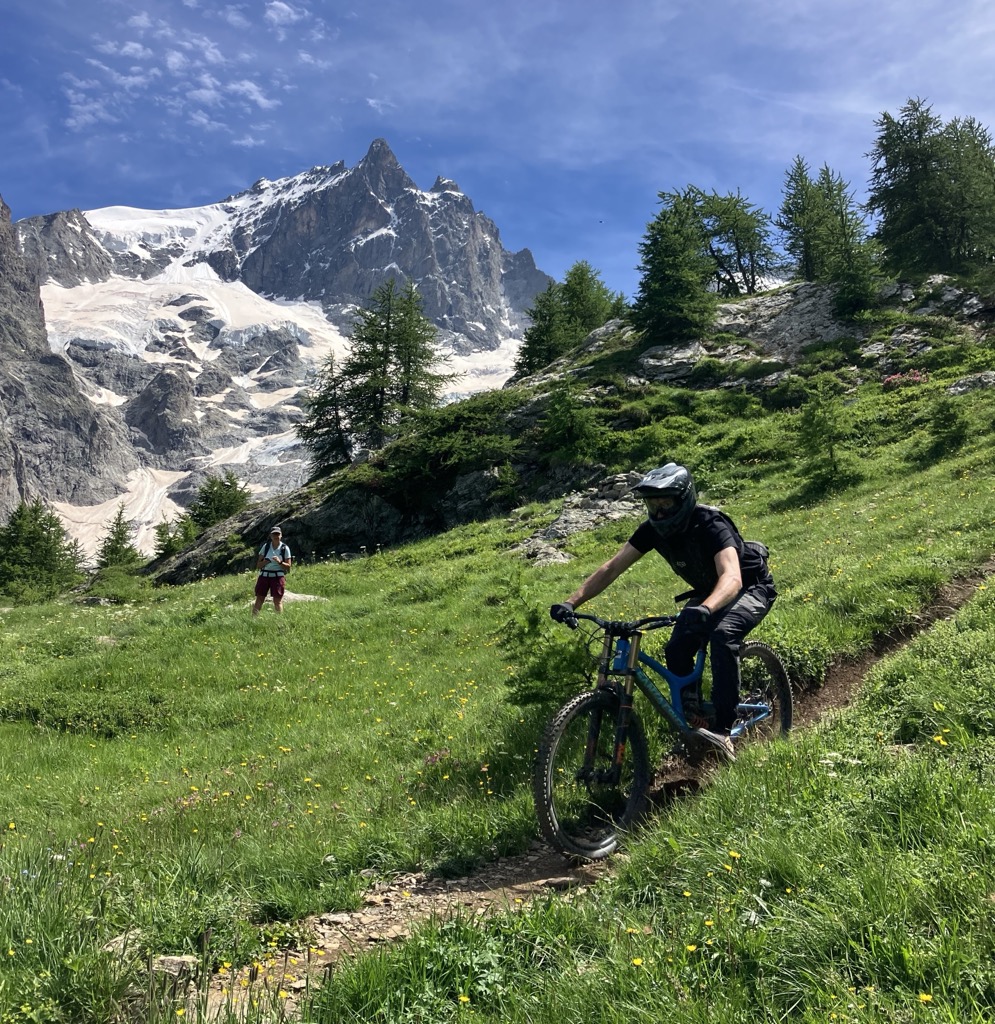
Trail Running ⭐⭐⭐⭐
People often say jogging is the best endurance training for skiing because it strengthens the legs and core. However, jogging is extraordinarily high impact, and a lifetime of skiing and jogging all but guarantees an eventual knee replacement.
Running on trails instead of pavement can provide all the aerobic benefits of jogging but drastically reduce the impact on your body.
- Trail running is easy and inexpensive to start.
- Uneven terrain strengthens the body’s balance mechanism, including the core, hip flexors, and ankles.
- Minor stress injuries, like shin splints, are common, but serious injuries are very infrequent.
- Descents will build reflexes. Steep climbs will cross the anaerobic threshold, building muscle for more power and less lactic acid.
The biggest downside of trail running remains the impact. Running is hard on the knee joint. That makes it risky to combine with a skiing hobby, which also contributes to cartilage wear and eventual osteoarthritis of the knee joint. It depends on the person, but I know many skiers who can no longer run because it hurts their knees.
Running can also feel like training. Many people get bored of running or find it too hard. It’s certainly less fun than mountain biking, but perseverance through the difficulty hones mental as well as physical strength.
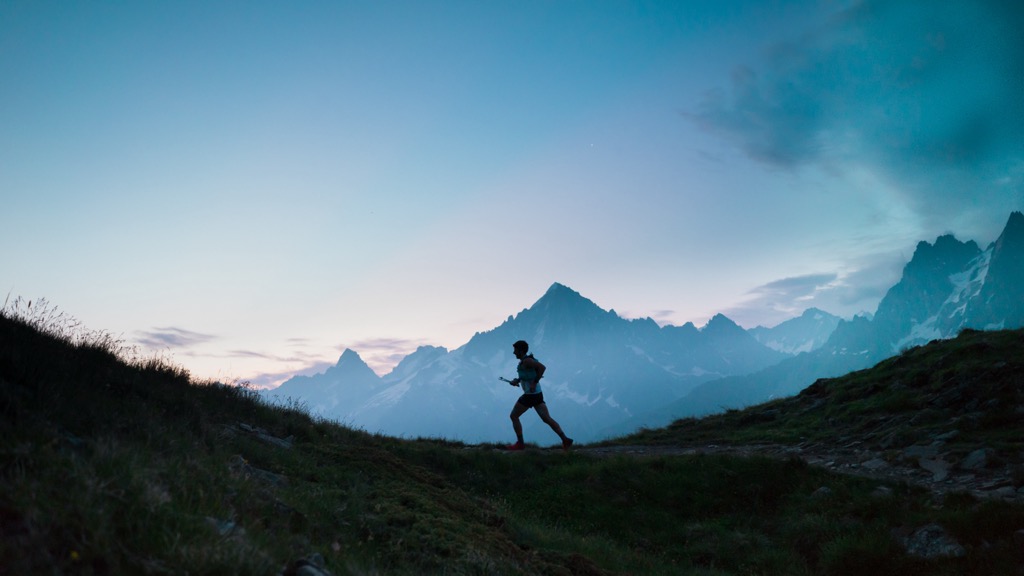
Surfing ⭐⭐⭐⭐
Surfing and skiing/snowboarding share a kinship of sorts. Both exude mellow, positive vibes and are defined by passionate individuals who have dedicated their lives to the sport. Both are challenging and time-consuming to learn and require decades to master. Both have become a lifestyle more than a mere hobby.
You might think that all surfers are snowboarders, but plenty opt for skiing. Either way, surfing will likely improve your game on the snow, even though it’s not leg-focused.
- Surfing will improve skiers' endurance because there are no lifts, so every wave is bookended by a long paddle out from shore.
- Skiing and surfing both require tremendous balance. Spending your summer balanced on a surfboard will likely do wonders for your balance on skis or a snowboard.
- The Flow State. I mentioned this regarding mountain biking, and it applies to surfing as well. People often compare the feeling of riding a wave to the feeling of riding powder.
Surfing is the only sport I know of that has inspired an actual philosopher to write a book about why you should do it: I Surf, Therefore I Am: A Philosophy of Surfing.
So, what are some downsides to pursuing the surf life? Well, if you can avoid getting punched in the face by some crusty local, coastal prices might do you in. There’s also the time and dedication involved to improve. Even standing up on the board for the first time takes a while.
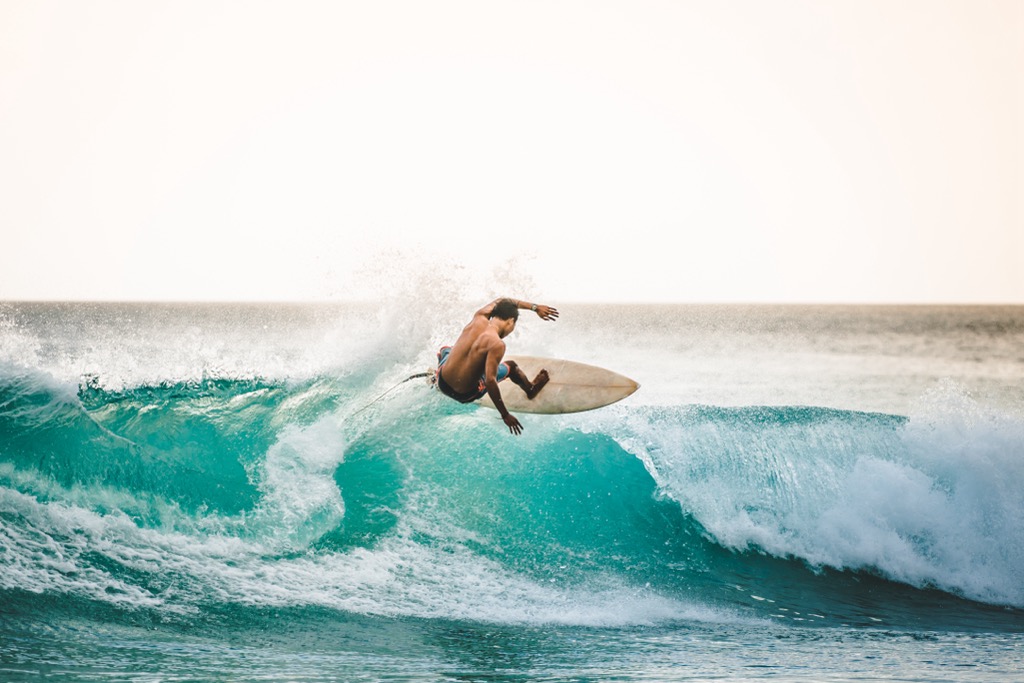
Hiking ⭐⭐⭐
Hiking is a great, accessible way to get outside and connect with nature. It requires almost no gear and is not as physically strenuous as trail running. Because you’re not focused on powering through each moment, hiking is the best way to take a deep breath and connect with nature. Anyone can enjoy a hike; there isn’t a learning curve the way there is with technical sports like skiing, mountain biking, surfing, and climbing.
Hiking will build leg muscles and improve cardiovascular fitness. However, because it’s relatively less strenuous than the other activities on this list, you’ll need to hike for at least a few hours at a time to see that fitness translate to a day out on the slopes.
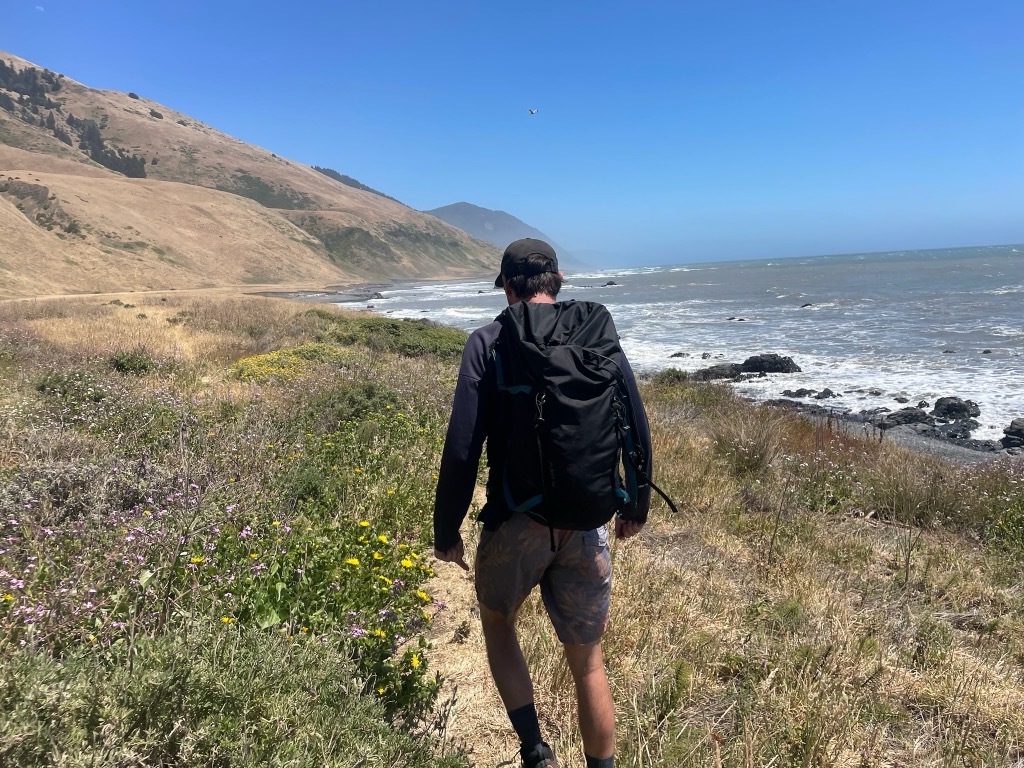
Road Cycling ⭐⭐⭐
Similar to trail running, cycling offers immense aerobic benefits but with none of the impact. For this reason, even novice cyclists can ride for hours on end, whereas the same is not true for running.
- Cycling increases the strength and efficiency of the heart muscle more than any other sport. Professional cyclists have the lowest recorded resting heart rates, occasionally lower than 30 BPM. Cycling also builds leg and core strength, which you need for skiing.
- Another advantage of cycling is the widespread availability of indoor “spin” classes. There’s something far more satisfying about cycling indoors than running on a treadmill.
Outdoor cycling is the way to go but it requires roads or bike paths suitable for cyclists. Even then, there is a risk of collision with a vehicle or simply crashing your bike. Nevertheless, the risk of injury is significantly less than skiing or mountain biking.
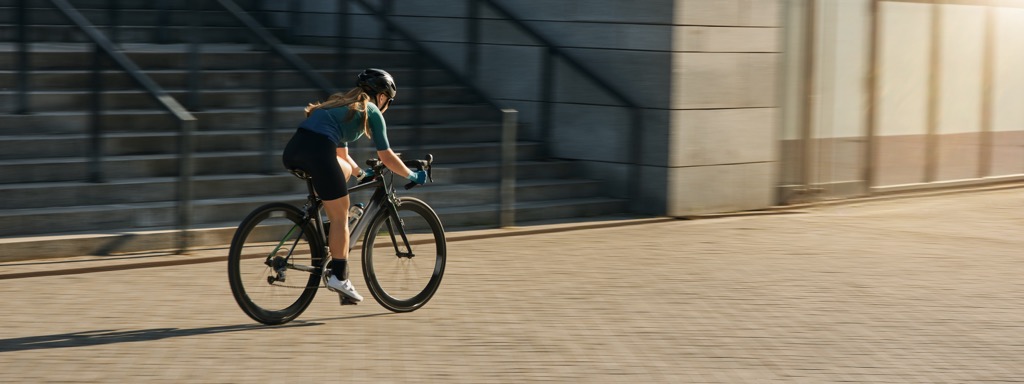
Rock Climbing ⭐⭐⭐
Climbing is like high-intensity, vertical yoga. Not only is it good for skiing, but it’s good for movement. Climbing increases strength and understanding of the body’s movement potential in a way that could benefit any athlete.
People who don’t climb associate climbing with muscles and shirtless men, but that’s just not the case. Women are usually better climbers than men when starting out because their first instinct is to use their legs and core to move upwards rather than pulling with their arms. On the other hand, triangular-shaped men are usually terrible climbers because an imbalance of upper body strength doesn’t translate to the technique and balance that climbing requires.
- Whereas the other sports on this list are aerobic, climbing is anaerobic. That means your muscles are subjected to a rapid, intense workout and generate energy without oxygen. Anaerobic exercise increases power and efficiency and decreases lactic acid.
- Many types of climbing don’t require an enormous amount of gear.
- Gym climbing is an excellent option for urban folk.
Climbing is a full-body workout that will increase core strength, flexibility, and balance in particular. However, the core, trunk, hands, and arms are favored over the legs. It’s also very technical, meaning that learning the specific techniques (crimping, smearing, etc.) is as important as fitness. Therefore, it won’t completely translate to skiing.

Football / Soccer ⭐⭐⭐
Football (American soccer) is probably the best team sport to translate to skiing. In short, football is all about agility and reflexes, two traits that will translate well.
- It’s a global sport. You’ll easily find an adult league wherever you live. You can also play the game anywhere; you only need an open space.
- Football is highly aerobic and will work the legs and core, particularly the fast twitch muscles you use to quickly change direction.
- Very low gear commitment.
Because it’s so reliant on sheer agility, football is tough for older folks to play. It also has a medium risk potential for injury, with knee ligament and Achilles tendon tears common.
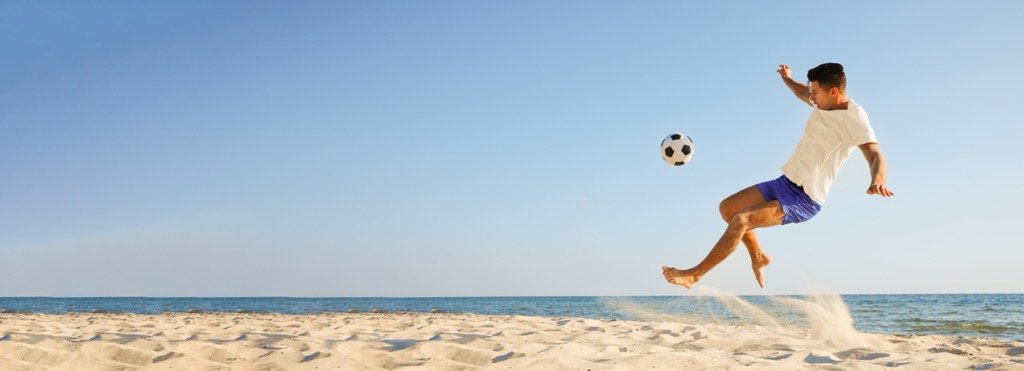
Ice Hockey ⭐⭐
Ice hockey, or simply ice skating, mimics the movement of skiing more than any other sport out there. Ice skaters use their blades the same way that skiers use skis. They engage the edge to turn and do a j-turn to stop.
The issue with hockey is that the season overlaps with winter. Skating rinks still operate during the summer, but it’s challenging to find rink time, and public hours are crowded, if they’re even available. I’ve never heard of anyone getting into hockey as an adult.
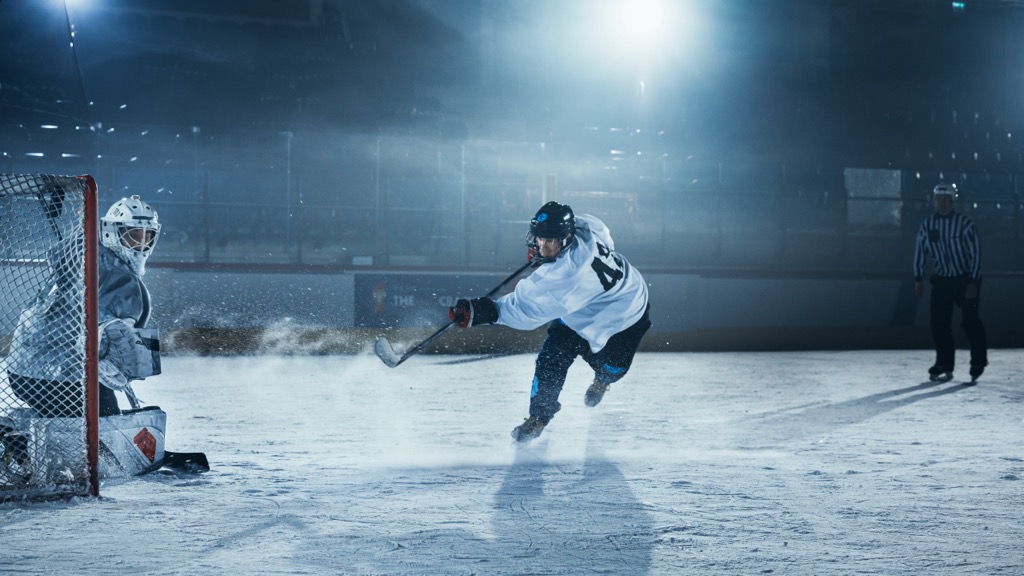
Swimming ⭐⭐
Swimming is the quintessential full-body workout—it uses nearly every muscle. People swim for both pleasure and exercise.
- Swimming is often possible for the oldest members of our society. It’s the least impact of any activity on this list.
- Distance swimming builds aerobic endurance as effectively as running and cycling.
- Swimming requires almost no gear.
- It’s highly enjoyable, especially if there’s a natural body of water nearby (I, for one, don’t much care for pools—but that’s just me).
I put this one down on the list because it seems that most people drawn to downhill skiing are also drawn to surfing rather than just swimming.
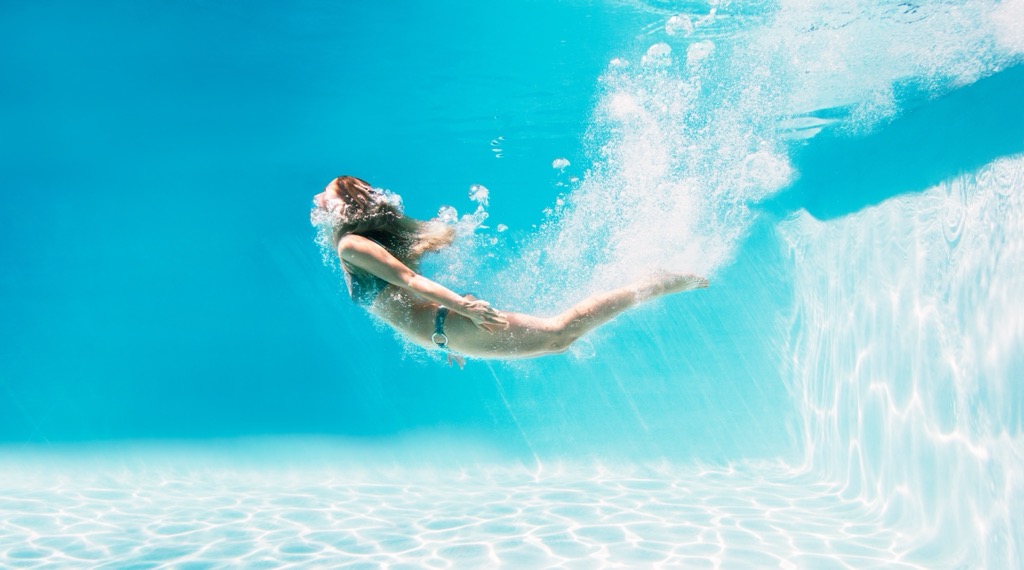
Training for Ski Fitness
Training—even the word makes me cringe a bit, like hearing the word homework. I’ve never been able to fall into a training regimen like some people do. Fortunately, I found this hilarious video by Cody Townsend that makes light of the same feeling.
The thing is, I know Cody Townsend trains a lot to have a successful career as a pro skier. So does nearly every other pro, especially as they get older.
Stretching
The first bit of training that any athlete should start with is stretching before and after a workout or at least once a day. Personally, I stretch with a foam roller to really apply pressure to the big muscles, like the quadriceps and gluteus (buttocks). It also helps me stretch my back out. Here are some key stretches:
- My personal favorite is the pigeon stretch, which really opens up the hips and is critical in alleviating the lower back pain that tight hips cause.
- Laying on your back, you’ve got the classic knees-to-chest to stretch the lower back. Alternate that by laying on a foam roller under the lower back.
- Touching your toes while both standing and sitting stretches the IT band.
- The butterfly stretch prevents groin strains.
Check out this Outside Online article for an explainer on eight basic stretches for athletes.
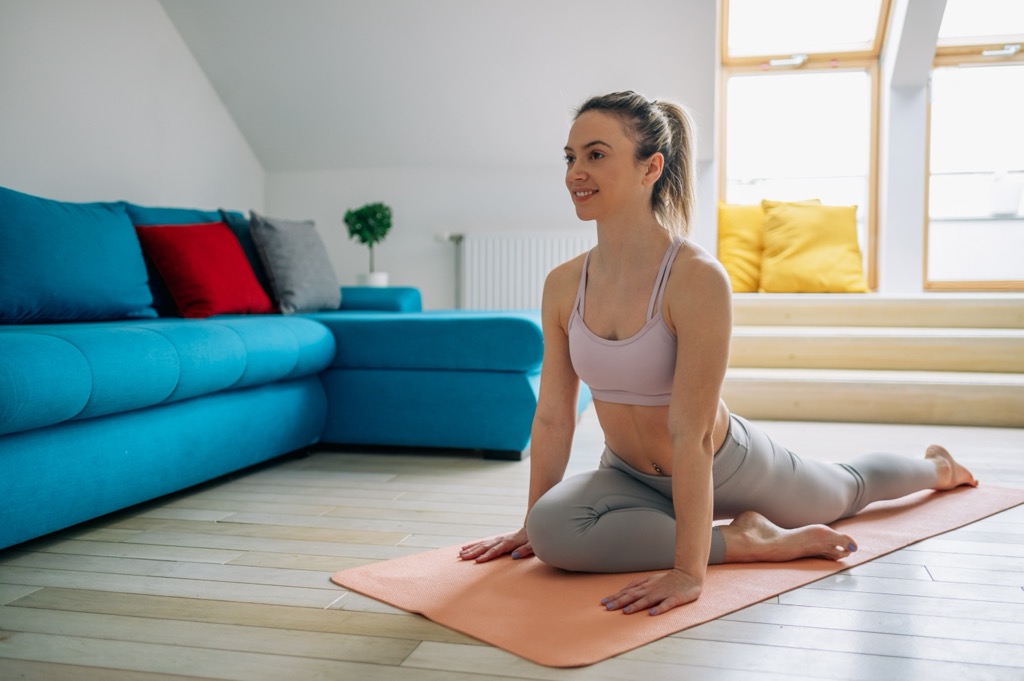
Training
One of my favorite YouTube Channels, Stomp It Tutorials, put together a thorough video with professional trainer Ian Holland-Coulton on the 4 Pillars of Performance. It gives you all the information you need to know; now, you just have to put in the time.
You’d be hard-pressed to find a freeride skier more passionate about training than Red Bull athlete Johnny Collinson. His YouTube Channel features videos on various workouts you can do from the gym or at home with basic equipment. Meanwhile, his Instagram account is full of fitness content. It’s telling that on his Instagram, he describes himself as a Movement Enthusiast, not a pro skier.
Collinson is candid about his love of working out, climbing, cycling, mountain biking, and even gravel biking. His workout regimens are very balance-focused, the most crucial facet of fitness for the average skier.
Meanwhile, squats and deadlifts are the core of a downhill ski racer’s power training. I linked the video because you need to ensure you’re doing them right; these intense weight-bearing regimens can cause serious injury if done improperly.
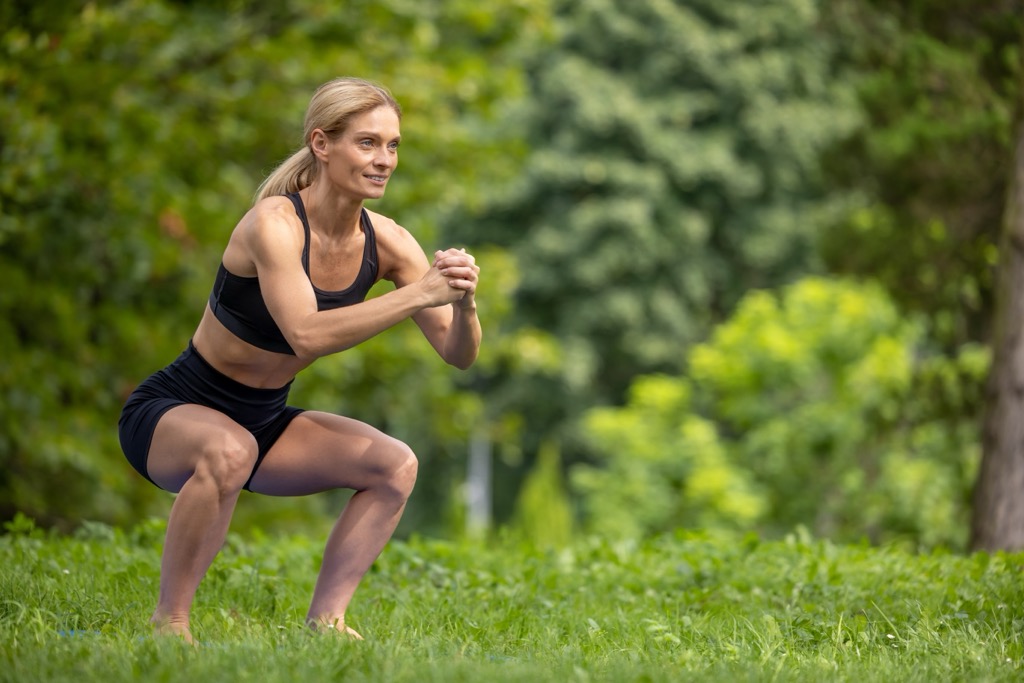
Conclusion
My thesis is that if you’re trying to stay fit for skiing during the off-season, your best bet is to develop a passion for another sport. The “training” regimen that will help you the most is a stretching routine, ideally in the morning and at night. The majority of people fall into this camp.
However, if you’re already an expert skier looking to break out of a plateau and improve your skills, training specifically for skiing will help you achieve your goals.
Hopefully, this article will offer some helpful information for your skiing journey! As always, feel free to contact us with comments or suggestions at peakvisor@routes.tips.
